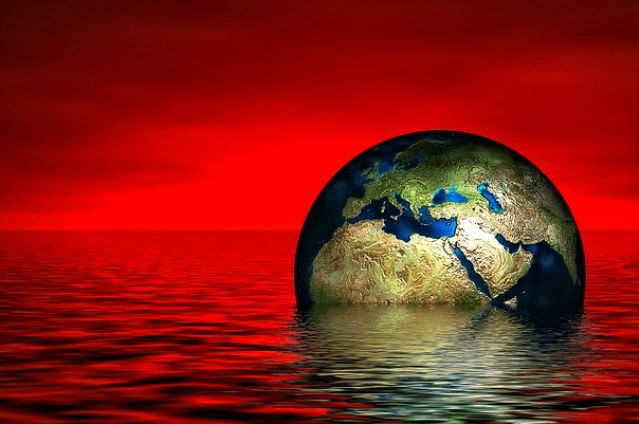
Studies have concluded that heatwaves that hit the western Indian Ocean and the northern Bay of Bengal the most; will be a permanent feature by end of the century.
As the globe warms up to an unprecedented level, it boils the oceans as well. Being a climate moderator for the planet, the warming up of the oceans fundamentally disrupts the climate cycle, as scientists have found.
High ocean temperatures are changing ocean currents. They seem to have picked up the pace by 15% from the years especially 1990 to 2013 due to some artificial changes. The impacts are more pronounced in the tropical oceans due to surface winds that have intensified since the 1990s. Stronger tropical currents could carry warm water to higher latitudes.
Chinese Academy of Sciences stated that by reaching deep into the ocean, the acceleration could boost the storage of heat in the depths. They drew the conclusion using a network of Argo floats, which also track winds. Scientists could only track the upper 2,000 meters of the ocean. Thus, intensive observations that monitor the deep global ocean circulation are urgently needed not only for understanding past conditions but also for reducing uncertainty in future projections of the global ocean circulation.
The Indian Ocean, in particular, has emerged as the biggest victim of climate change. The sea surface temperature ( SST ) of the tropical Indian Ocean has risen by an average of 1°C from 1951 to 2015 against the global average of about 0.7°C. The average sea surface temperature has touched 28.08°C, as per studies. The warming pattern is not the same everywhere. From 1901 to 2012, the western Indian Ocean warmed up by 1.28°C against an increase of 0.78°C recorded in other parts of the Indian Ocean. The surface waters of the Bay of Bengal stay largely above 28°C. The Arabian Sea used to be cooler than 28°C, which means that it was not always fertile to support the formation of cyclones. However, in the last decades, the Arabian Sea has warmed up rapidly with the rising temperature in the ocean which has favored the formation of cyclones. The frequency but the intensity and duration of these cyclones have increased. When the surface sea temperatures cross 90% of the previous SST observations, the situation can be termed as a marine heatwave. The term marine heatwave has been coined for the first time in 2011 when there was a rise in surface sea temperatures, particularly in Australia. It's impact on biodiversity and the economy is detrimental to the future. Since then, they came to be known as a hazard or a natural calamity. These events often accompany El Nino events in the Pacific Ocean. The marine heat waves are particularly less studied in the Indian basin. The tropical Indian Ocean has been warming much faster than the Atlantic or Pacific. The corals struggle to survive in such high temperatures. The SST in the Bay of Bengal hovered at 33-34°C, which is the highest ever recorded in open seas across the globe since we started recording temperatures. These studies suggest that the intensity and frequency of marine heatwaves in the Indian basin are steadily increasing and these extreme events are here to stay.
Scientists from Stanford University, warn of imminent mass annihilation of marine species similar to the Permian extinction ( 250 million years ago ) that wiped out most lives in oceans. Permian Extinction ( or the Great Dying ) was caused by the global warming that left ocean animals unable to breathe. Roughly, 96% of marine species and 70% of land species went extinct. It was the Permian Era when the land masses collided to form the supercontinent Pangea.
The effects of global warming are actually heading the world towards a future of mass destruction everywhere. Hence, we must open ourselves to reality as early as possible and should start taking steps to curb the negative effects of climate change.
"If we are to save humanity and the planet from the worst mass extinction of all time, worse even than that at the end of the Permian, we must stop at two degrees." - Mark Lynas
. . .
References:
